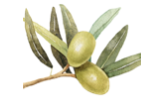CATALAN VERMOUTH VINEGAR | 2 SIZES | CLICK TO CHOOSE



CATALAN VERMOUTH VINEGAR | 2 SIZES | CLICK TO CHOOSE
Since the late 19th century Catalans have claimed vermouth as their own despite it having been created by Piemontese Italians, then by the French. They are passionate about it as an all-day, all-purpose alcoholic beverage even more so than Italians and French. We do not import Catalan vermouth to the U.S., but in Catalonia (Catalunya) there are dozens of brands (as with Brazilian cachaça and rum from almost every country in Central and South America).
VERMOUTH WINE VINEGAR
The key to the Gardeny family’s vinegars was discovered by German scientist Johan Sebastian Schützenbach in 1823. Thanks to their passion for vinegar, two daughters and their father, operating out of the bustling Catalan town Mollerussa, just east of Lerida (Lleida), they perfected the Schützenbach method. No one but Gardeny produces vinegars using this revolutionary method, 10 times slower than standard vinegar production. As such, they are able to capture and absorb the essences of the fine wine they use as their raw material. The challenge was to create an ideal vinegar for salads that was also able to combine food with vermouth.
Color: Bitter pale cherry.
Scent: Richly aromatic. The main component is gentian; other aromatic herbs include bay, rosemary and Dictamnus hispanicus, an aromatic flower.
Flavor: Its flavors and fragrances make it a versatile and accessible ingredient. It enters the mouth with a strong flavor and leaves a slightly bittersweet aftertaste.
Pairing: One of the most delicious culinary combinations that can be made with this vinegar is with brined mushrooms. Another very good option is with vermouth-pickled anchovies. For all salads as a vinaigrette with olive oil with or without garlic and dijon mustard it is remarkably delicious.
We must include a ‘thank you’ to best pal Basque-born, Barcelona-raised longtime New Yorker Iker Fernandez, our long-time Catalan insider.
